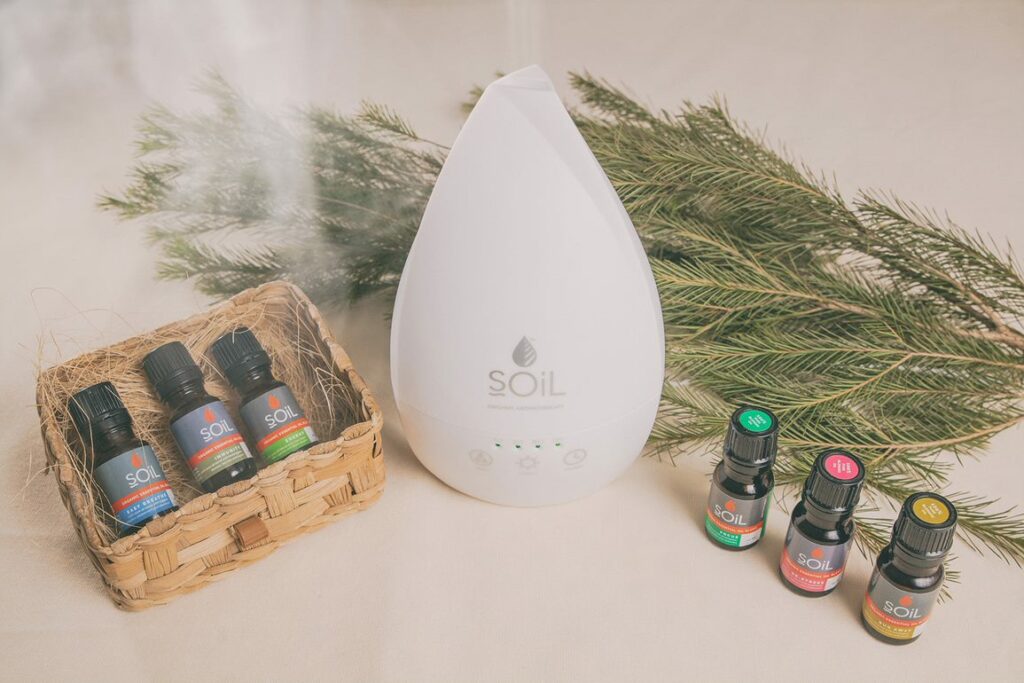There are many ways to diffuse essential oils; there are many different types of oil diffusers that work through four different methods of diffusion: Nebulisation, ultrasonic or humidification, evaporation and heat. As with all mod cons, ultrasonic essential oil diffusers were designed to be better than any of their alternatives, an improvement on the original diffusion technology. An ultrasonic diffuser really is the best essential oil diffuser. Once you know the difference, as outlined below, you will choose an ultrasonic diffuser every time. Why?
Ultrasonic diffusers use entirely different mechanics but also result in a mist or humidification of the essential oils. An ultrasonic diffuser will have a small disk that vibrates rapidly in water that has been infused with essential oils. This vibration breaks up the oil and water into tiny molecules that then disperse into the air. While turning liquid into vapour would typically require heat, this method accomplishes the change in state without any heat being required. Because the oil is first diluted with water and also relies solely upon the room’s natural air currents to disperse, this type of diffuser works best for those only requiring a small amount of oil to be diffused throughout a room.
Nebulising diffusers use a constant air supply source. A jet of air is blown over a small tube containing the essential oils. This airstream creates a vacuum effect that pulls the oils up out of the tube and sprays them into the air in a fine mist. Unfortunately, this process can cause some noise.
Evaporative diffusers are a more advanced form of the simplest method of essential oil diffusion.
A small fan is used to blow on the oils that have been dripped onto a filter or other such surface. The blowing air from the fan causes the oils to evaporate faster than they would normally.
Reed Diffusers are also considered evaporative diffusers and use something called capillary action to draw oils up and out of the oil. They don’t consume energy and are usually made of natural or recyclable materials.
Heat diffusers work very similarly to evaporative diffusers but instead of air, they rely on heat to disperse the oils into the air. However, heat diffusers suffer from the same drawbacks as evaporative diffusers.
The soil ultrasonic diffuser, in image on the right, is the most effective device, retaining the full strength and efficacy of the essential oils, compared to diffusing methods or devices which heat the oil.
Facebook: @SOilAromatherapy
Instagram: @soilorganic


